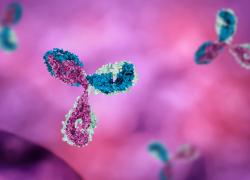
Black Diamond picks its lung cancer battle
The biotech gives up on the exon 20 market, and says Tagrisso’s initial setting is no longer meaningful in the west.
The biotech gives up on the exon 20 market, and says Tagrisso’s initial setting is no longer meaningful in the west.

After failing with an EGFR exon 20 insertion inhibitor, BDTX-189, Black Diamond Therapeutics has emerged with a new emphasis on non-classical EGFR mutations. “We’re happy to concede the exon 20 market – that’s just not our focus,” the group’s new chief executive, Mark Velleca, tells ApexOnco.
He’s in the fortunate position of already having the basis for such a pivot: the company’s new lead asset, BDTX-1535, scored in a NSCLC trial last June, three months before Velleca took over running the company from the founding chief, David Epstein. Now Black Diamond needs to convince the market that non-classical EGFR mutations are the real deal.
The issue goes to the heart of targeted NSCLC therapy, a space redefined by AstraZeneca’s Tagrisso, now a first-line standard of care in EGFR-mutated disease. Building on Tagrisso, as Black Diamond is trying to do, has caused Blueprint Medicines problems, but the recent flotation of Arrivent shows how much investor appetite still exists.
Tagrisso escape mutations
Black Diamond says it is working on classical mutations as well as others “that we’re now only just starting to appreciate”, says Velleca. The latter have only emerged as escape pathways in response to Tagrisso, and all confer a conformation in EGFR that “can be drugged with BDTX-1535”.
This shows how targeted NSCLC treatment has changed. Iressa and Tarceva were early-generation inhibitors that hit classical driver mutations, namely L858R and exon 19 deletion, but T790m emerged as a key escape mechanism. Along came Tagrisso, first being approved for T790m-driven NSCLC and then moving into the front line with classical activity.
Now Velleca reckons T790m is no longer a meaningful mutation in the west. “Tagrisso has essentially made it disappear,” he states, by preventing classical mutation-driven disease from escaping down this pathway. As such he’s happy to accept that BDTX-1535 has no activity on T790m; instead he points to new non-classical Tagrisso escape mutations that BDTX-1535 does hit, such as C797S.
Not only that, but some other non-classical mutations might not exist only as escape pathways, but could actually be “lurking [at primary diagnosis] with L858R, and Tagrisso doesn’t hit them”, Velleca says.
To back this he cites progression-free survival rates with Tagrisso that differ depending on which type of classical EGFR mutation a patient has. Progression for exon 19 deletion disease is “almost always” by way of C797S escape emerging over time, while patients with L858R end up with lung cancer driven by a range of other unusual "intrinsic driver" mutations, and tend to do worse.
Having learned all this Black Diamond can now boast BDTX-1535, a project that hits “all the classical mutations very hard, hits non-classicals, and is covalent [irreversible]”.
AACR next
The next arena will be AACR, where Black Diamond plans to describe its current understanding of the EGFR mutational landscape. After that full data from a BDTX-1535 cohort in glioblastoma will come at a second-quarter oncology conference – ASCO seems likely, assuming an abstract is accepted.
Those data will be intriguing, as targeting EGFR in glioblastoma has previously been problematic. In December Black Diamond press released one confirmed partial response, plus one stable disease for an unusually long 15 months, among 22 efficacy-evaluable subjects, something Velleca calls an “interesting signal”.
He accepts the many unknowns, and says it’s not even known whether the long-duration patient still has an EGFR mutation, but calls glioblastoma a potential “quick win”; a first-line trial would give Black Diamond the highest chances of showing activity, and would be easy to enrol.
This is all a far cry from BDTX-189, which until 2022 was Black Diamond’s lead, in the EGFR exon 20 insertion NSCLC space; here Johnson & Johnson's Rybrevant is approved, and Velleca admits that many had “overestimated” this market. Not only that, but “BDTX-189 just wasn’t a very good drug”, he says.
As for Black Diamond’s new rival, Arrivent, this company’s EGFR inhibitor furmonertinib is approved in China in a setting similar to Tagrisso’s, though in the west it’s targeting exon 20 insertion and other mutations. Velleca says furmonertinib is “structurally very similar to Tagrisso”, and any activity on exon 20 insertion comes simply from its unusually high dosing.
Be that as it may, the markets need some convincing: after floating last month Arrivent boasts a market cap over $650m, while Black Diamond, even after its recent run-up, is valued at just $240m.
2842













